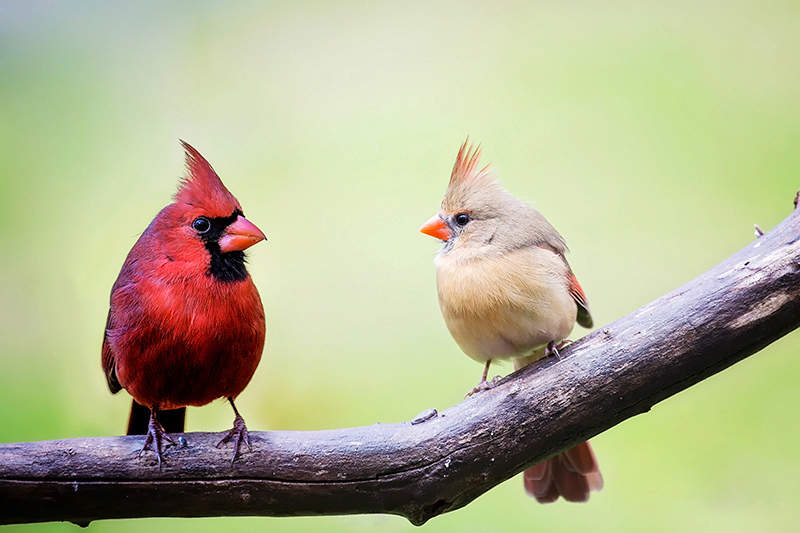Feeding Birds: Safflower and Sunflower Seed
Birds metabolize fats and oils easily. Stoking on high-energy foods such as safflower and sunflower seeds are important to their health.
Black oil sunflower seed provides the most energy per pound of any typical birdseed. Black oil sunflower seeds are easiest for most birds to eat, too, because they have thin shells compared to striped sunflower. When problem birds take over a feeder, striped sunflower becomes an excellent alternative. Its thick shells are no problem for cardinals and grosbeaks, and even chickadees can easily hammer into them, but House Sparrows, starlings, and some blackbirds will usually give up and find a feeding station with easier choices.

Safflower seeds have a thick shell, hard for some birds to crack open. It is a favorite among cardinals. Some grosbeaks, chickadees, doves, and native sparrows also eat it. Only a small percentage of people feeding birds offer safflower. Many birds aren’t familiar with it, so your birds may need some time to accept it. Also, according to many sources, House Sparrows, European Starlings, and squirrels don’t like safflower.

You can set out any of these seeds in a variety of feeders. Cardinals visit tube feeders with reasonably large perches, and hopper and tray feeders as well. Most grosbeaks prefer hopper and tray feeders. Chickadees and other little birds can also feed on very small hanging and window feeders.
Make sure any seed mixes you buy include plenty of these high-energy choices. If you discover that your favorite birds are picking all the sunflower and safflower out of a seed mix, you may want to fill one feeder with pure sunflower or safflower. Both safflower and sunflower can be bought in small bags, in bulk, or in mixtures.





